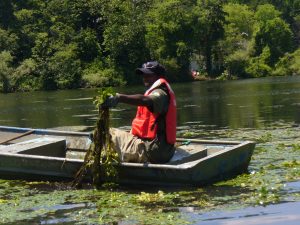Conservation and Management
Environmental conservation and management challenges sit at the intersections of human decisions (e.g., policymaking and consumer demands) and ecological changes—many of them influenced by human actions. Decisions to better manage and conserve ecosystems and species require thus close attention to both dimensions (human and environmental) and the impacts of individual and collective efforts at multiple scales.
The chapters in this section examine many environmental conservation and management challenges from both a human and ecological perspective. Several chapters study the problems in managing invasive species, including eradication efforts of the Asian Longhorned Beetle in New England, the Red Lionfish in the Gulf of Mexico, the Caribbean, and the Atlantic, and the extensive distribution of Red Foxes in Europe and North America. These chapters remind us that although public debates on invasive species tend to blame and focus on the “invasive” species, the processes leading to these population changes are rooted in a combination of human and ecological factors.
In addition, the chapter on “Gentle” Giants, The Goliath Grouper, highlights the importance of international conservation policies in reversing population declines and protecting vulnerable species. As the chapter’s authors remind us, it is crucial to understand that although management systems are imperfect, they are incredibly necessary. Finally, the chapter on the Arctic Fox offers a cautionary tale of an extinction process in the making. The chapter examines the impacts of habitat loss, human interference, and climate change in the Arctic to point out the need for preventive protection to keystone species that are and will be critical as we continue facing the impacts of climate change and human actions.

A species of plant or animal that has a major impact (as by predation) on its ecosystem and is considered essential to maintaining optimal ecosystem functionality or structure.
